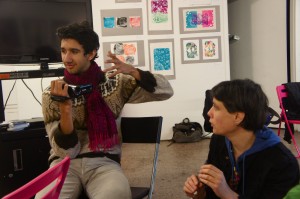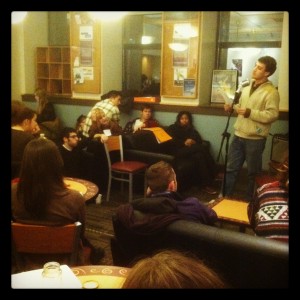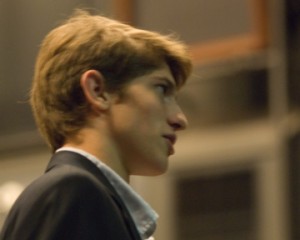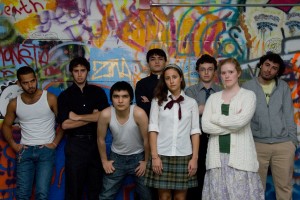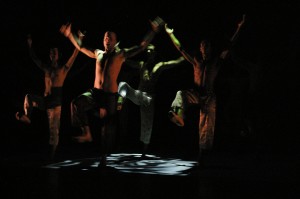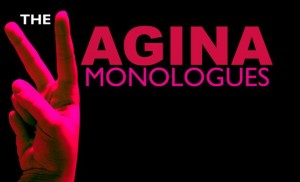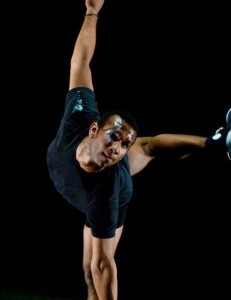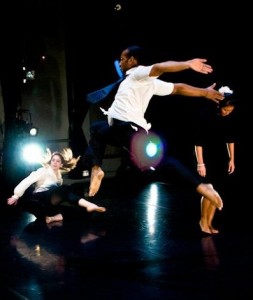The Wesleyan Theater Department is presenting Gertrude Stein’s “Doctor Faustus Lights the Lights” this weekend. Ms. Stein’s play uses the traditional Faust story but departs to examine technology and industrialization as well as perceptions of the self. Earlier this week Sarah Wolfe ’12 sat down with cast member and Assistant Director Lily Haje ’13 to discuss the upcoming performance. The show opens this Thursday, April 26 and ends Saturday, April 28.

The Faust is a popular German legend that has been told most famously through Goethe’s “Faust” and Christopher Marlowe’s “Doctor Faustus.” Can you give me a brief description, in your own words, of both the original legend and what Gertrude Stein has done to it?
The traditional Faust story is about a human scholar who tries to make a pact with the devil to exchange his soul for either ultimate knowledge or ultimate power. The Stein story is rather different. Instead of beginning with the moment of the pact, as the Goethe and the Marlowe do, she begins at the moment of collection. We don’t actually see Faustus make the pact with the devil. Also, rather than exchanging his soul for knowledge or power, this Faustus exchanges his soul for the ability to create electric light. Ms. Stein had been living in the U.S. when electricity had first come into common usage. She then moved to Paris, back to a place where they did not have universal electricity, and re-experienced the introduction of electricity and wrote this play. There’s a lot in it about the process of industrialization and man’s relationship to nature and man’s relationship to himself and to religion.
There is another character in Ms. Stein’s play named Marguerite Ida and Helena Annabel. She exists outside of Faust’s urban, industrial, technical world, and she is both four women and one woman. The way we have her in the play she’s sometimes one, sometimes four, sometimes two, and sometimes five women. This brings up this idea that the play grapples with: what is the self and how are identities both singular and multiple.
The play is less about characters in a traditional realist sense than it is about the language, which is beautiful. There are very few words in the play that have more than two syllables. It’s very simple, very much everyday language that then is constructed in completely bizarre and wonderful ways. For example:
I am I and my name is Marguerite Ida and Helena Annabel, and then oh then I could yes I could I could begin to cry by why why could I begin to cry.
And I am I and I am here and how do I know how wild the wild world is how wild the wild woods are…
How has Wesleyan adapted Gertrude Stein’s intentions for this play?
What Ms. Stein was writing about was the newest kind of technology. For her, electric light, which we take for granted now, was a completely innovative thing which opens up the world of what light is like. So we’ve been trying to take a similar approach to the show in terms of thinking about what is technology now. So we have lots and lots of lights, doing all kinds of crazy things. And we have a lot of projections, which is the most exciting new technology in theater that is still connected to light. It is all light, it is just a very different way of using light.
Furthermore, a lot of the production is not trying to hide what is not real. We have actors operating puppets, we have actors operating flashlights to operate the puppets. All of the masking goes away and you can see actors sitting on the side of the stage. All of the lighting instruments are visible. It’s very much about creating a theatrical event that is consciously a theatrical event. We have many people playing many different characters. With the exception of Mephisto [the devil], who is played by the same two people for the duration of the piece, pretty much every character gets played by multiple people, often at the same time. So it isn’t just Marguerite who is one and four and two and five, but Faust is also played by almost all of the men in the cast at one point or another. There are often two Fausts on stage at the same time.
The Theater Department has branched out in terms of design for this project. Designing sound is Demetrio Castellucci, of Dewey Dell. Designing lights is Ji-Youn Chang, a graduate of Yale School of Drama who previously collaborated with the Theater Department on The Tragedy of Richard III. Can you describe the experience and challenges of working with designers who were spread across the globe?
One of the things that’s both been cool and challenging about the process is that it is such a tech-heavy show. Demetrio only got in a week ago and Jiji was here a little before then. Everything that we’ve created has been videotaped and put on Dropbox so that Demetrio could be in London, seeing what we were doing and creating scores for it and same thing with Jiji and the lighting. It’s been fascinating to see how you can put a show together over huge distances. It has been a challenge given how much we interact with the lights and sound and projections, to not get those elements until very late, but now that we have them we’re working very intensely with them.
What should the audience expect to take away from the show when they see it this weekend?
I think that it’s a show that benefits from watching it at face value first. Because it isn’t character driven in the traditional sense and because it isn’t plot driven in the traditional sense, I think the best way to watch it is without trying to make sense of it until it is over. There’s so much to look at and to hear and to engage with in it on its own terms before trying to analyze it. It does have a logic. It does make sense. But you kind of have to let it make sense instead of trying to make sense out of it.
Come see “Doctor Faustus Lights the Lights” at the CFA Theater, from Thursday, April 26 to Saturday, April 28. The show starts at 8pm.




